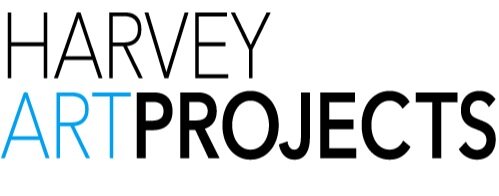A WOMAN’S WORK | paint, culture & community from the desert’s heart
“When I paint, I think about my country and where I have been travelling across that couontry. I paint from here (points to head-thinking about country) and here (points to breasts, collarbone and shoulder blades which is reference to body painting). I think abut my people the old people and what they told me, I think about jumangkarni (Dreamtime). Nobody taught me how to paint, I put down my own ideas, I saw these places for my self, I went there with the old people. When I paint I am thinking about law from a long time ago, I am thinking about the country, my country. ”
This US Summer 2020 brings a survey exhibit by leading women artists from the remote desert art centers of Western Australia, Northern Territory and South Australia.
A Woman’s Work celebrates women artists who are not only outstanding painters, but also important cultural and community leaders. These mothers, daughters, sisters, aunties, grandmothers and great-grandmothers are all revered matriarchs, women who empower, sustain and preserve their respective communities.
Since the late 1980's, the work of Aboriginal women artists has emerged as a dynamic and distinctive artistic movement. After many years sitting on the sidelines assisting their fathers and husbands, women overwhelmingly took the reins asserting their cultural authority through an ongoing artistic practice. This included the rise of a number of leading desert art centers who were spurred on by community female membership. Today women artists are at the forefront of Aboriginal Art, they are often its most daring innovators whose practice is unbounded by convention.
Almost all of these women were born in the bush where they grew up living a traditional hunter and gatherer life, many remarkably experiencing first contact with white people. The works in this exhibit not only articulate the artists' profound relationship to country and the experience of their upbringing, they remind us of the strength of generations of hard work built upon a foundation of cultural tradition, faith and perseverance. An inspiring gift for us all straight from the desert's heart.
MAKINTI NAPANANGKA received the posthumous honor of Order of Australia for her contribution to art in 2016. A highly esteemed artist and a leading figure in the emergence of women painters of the Western Desert Art Movement, Napanangka was a respected community member, senior Pintupi cultural custodian and matriarch to her extended family. A highly collectable artist, Napanangka was awarded the prestigious 25th Telstra Award 2008. | WAKARTU CORY SURPRISE was a highly regarded, award-winning contemporary artist known for her uninhibited painting style. She was born at Tapu in the Great Sandy Desert circa 1929 and worked as a founding member at Mangakja Arts in Fitzroy Crossing. Surprise was winner of the Western Australian Art Award in 2010. | NYARAPAYI GILES is one of the respected elder women of the Tjukurla Community in Western Australia. She was born in the bush at Kaarku west of Warakurna in Western Australia. She travelled throughout the Western Desert Region with her mother and step-father, hunting, gathering bushtucker and camping in the traditional way of her ancestors. Her knowledge of the Inma (ceremonies) Tjukurpa (dreaming stories) associated with the country here is extensive. | WAWIRIYA BURTON was born in outback central Australia some time during the 1920s. Like many of the women in this exhibit, Wawiriya grew up living a traditional, nomadic way of life. Her family lived in her father's homeland, around what is now Pipalyatjara in northern South Australia. Wawiriya has devoted her life as ngangkari (traditional healer)—she has extensive knowledge about country and sacred traditions. | ESTHER GILES was born around 1946 and grew up in the desert living the traditional nomadic lifestyle. Esther was known for her skills as a traditional basket weaver before becoming recognized for her exceptional painting skills. Her artworks represent the traditional homelands associated with her people's ancestral heritage. She was a highly respected member of Tjarlirli Arts. | BARBARA MOORE was born in 1964. In addition to being an artist Barbara is an Aboriginal senior health worker for Nganampa Heath. She works in a full time position at Amata Clinic and also commits to her painting practice working at the Tjala Arts centre on a daily basis. Her command of large scale works saw her receive the prestigious General Painting Award at the Telstra National Aboriginal and Torres Strait Islander Art Award in 2012. | SYLVIA KEN is a leading artist at Tjala Arts, located in Amata Community in far north-west South Australia. Known for her vibrant use of colour and energetic mark making, Sylvia is part of a highly distinguished group of family painters. Acquired by many high profile collectors across Australia and abroad she is also held in numerous public institutions. Sylvia was awarded the prestigious Wynne Prize in 2019. | NININGKA LEWIS is a skilled painter, tjanpi weaver and punu carver. She was born in the bush north of Areyonga. Niningka worked at the Ernabella Mission craft room where she learned to spin sheep's wool, later learning to make batiks and coiled baskets at the art centre in Kalka. Niningka is highly regarded for her figurative sculptures and also her quirky paintings - a medium she has been concentrating on since 2009. | DORIS BUSH NUNGURRAYI is a leading member of Papunya Tjupi. She is a highly acclaimed storyteller who paints vivid memories, stories and dreams from her life. Doris was born circa 1942 in Haast Bluff/Inkuntji. Her work often tells happy stories from these early days; eating, hunting and swimming with her friends and family in the bush. Doris is one of the most prolific and enthusiastic painters in the community and is usually the first to arrive each morning when - or even before - the doors open. Her work has been acquired into several Australian and international collections.













